
Sandro Botticelli and Dante Alighieri are both quintessential names from their respective time periods. Dante’s daily life in the late Medieval period was dominated by Christianity and its associated organizations. Botticelli, commissioned by the Medici family, would be asked to draw scenes from Dante’s Inferno and the entire Divine Comedy.
How Dante’s Inferno Forever Impacted Italian Culture
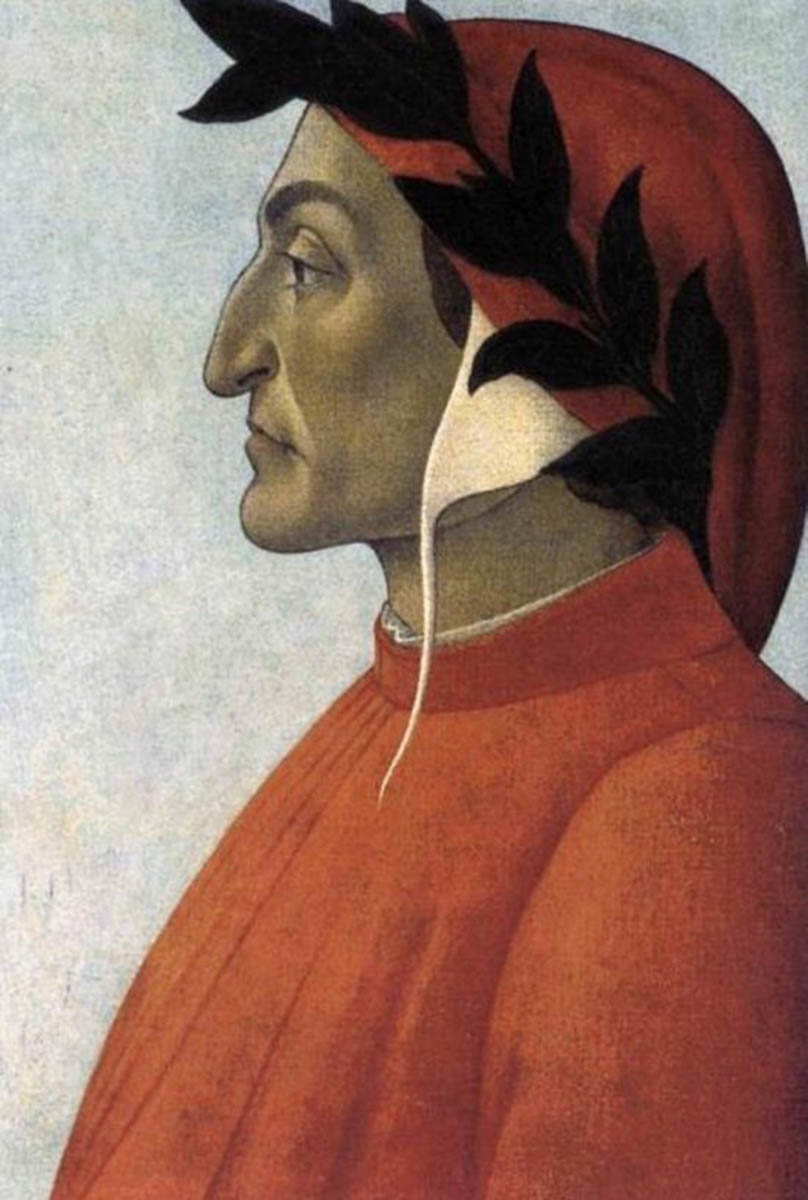
Dante’s Inferno, written in the late medieval period, is a three-part epic poem that imagines the kingdoms of the afterlife. While exiled from his hometown of Florence, Dante penned the poem that would go on to be one of the defining works of the medieval period. Botticelli, the painter of the above portrait, depicts Dante with laurel leaves, the signature of laureate poets.
Dante’s personal life was well-documented compared to his contemporaries, likely due to his extensive writings and political career. Because of the intricate details woven throughout Dante’s Inferno and the entire Divine Comedy, scholars are even able to ascertain which books and artworks Dante had access to throughout his life. Dante also wrote the Divine Comedy, in his mother tongue, the Tuscan variety of Italian. His choice to use his native tongue instead of Latin would later shift Italian linguistic identity to favor Northern varieties of the dialect.
Sandro Botticelli’s Role in the Renaissance
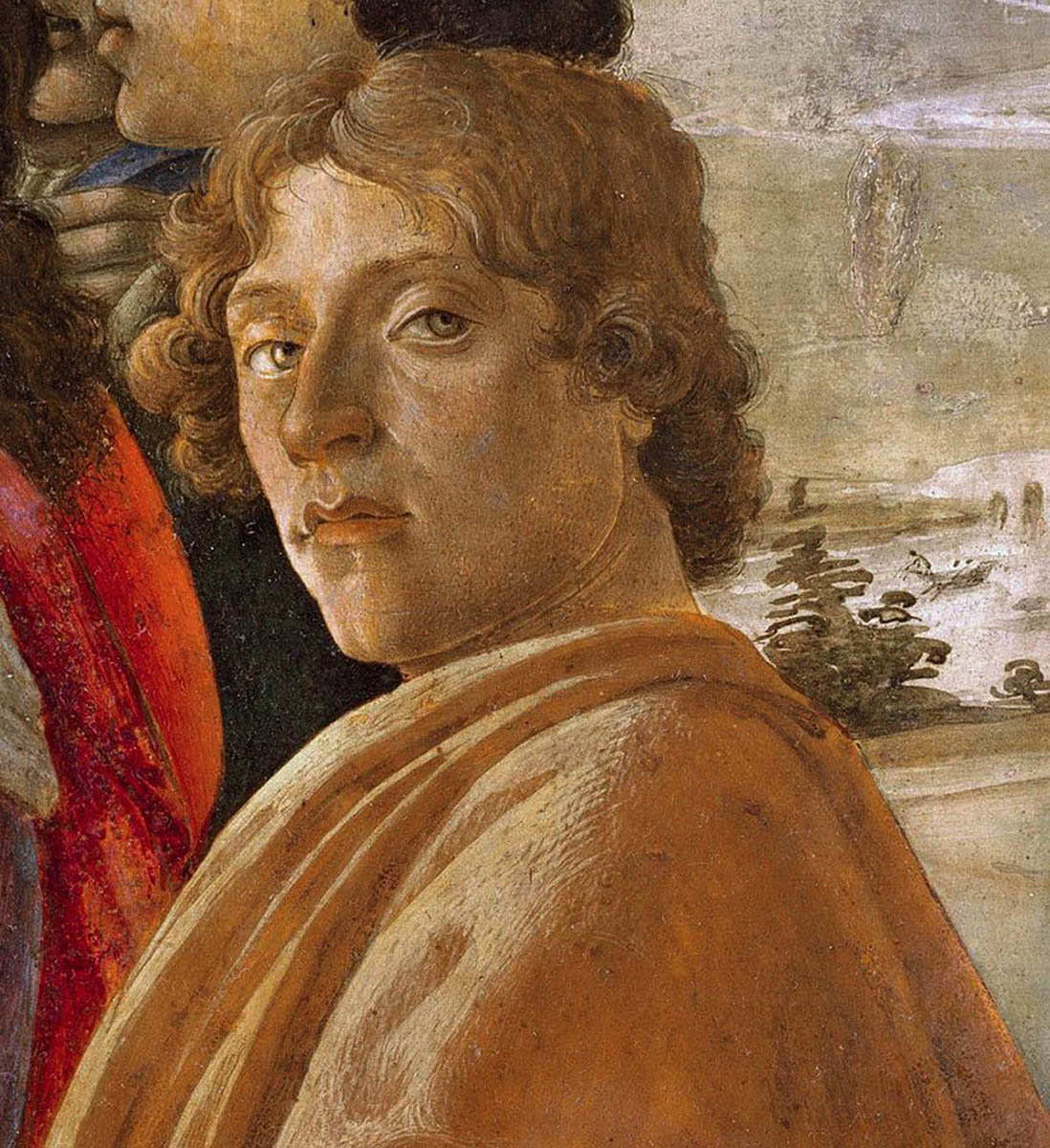
If Dante’s Inferno draws us in with the dark designs of hell, Botticelli’s artwork draws us in with levity. Botticelli, alive at the height of the Renaissance, lived about a century after Dante. Sandro Botticelli was the apprentice of Filippo Lippi, whose innovations in depicting religious icons would forever shape the field.
Get the latest articles delivered to your inbox
Sign up to our Free Weekly Newsletter
Throughout his career, Botticelli was primarily funded by the Medici family, and he was also hired by the pope to paint frescoes and biblical scenes in the Sistine Chapel. Botticelli’s renowned works, such as The Birth of Venus and Primavera, are still housed in the Uffizi Gallery. His works are the defining portraits of the Renaissance. One of Botticelli’s paintings recently went to auction, where it was predicted to sell for $80 million USD, although it ultimately fetched $92 million USD.
Two Italian Icons Representing Their Era

Many of the people we meet throughout Dante’s Inferno were Dante’s medieval contemporaries, and well-known religious and classical figures. Through meeting them in Hell, Purgatory, or Heaven, Dante examines each character through the lens of a world dominated by Christianity. Dante regards antiquity’s greats with confusion. He expresses clear admiration for their works, but their souls are “unbaptized.” A clear example of this conflicted sentiment is displayed when Dante relies on Virgil to guide him through hell. While Virgil is a great poet in Dante’s eyes, his soul is not Christian.
On the other hand, Botticelli’s Renaissance works embody the spirit of classicism. He and his contemporaries celebrated the contributions of the classical world, and actively sought to emulate their works. This leads us to wonder about the finer details of how Botticelli was asked to portray scenes from Dante’s Inferno. Botticelli was commissioned by Lorenzo di Pierfrancesco de’ Medici to complete drawings of each canto in Inferno. These drawings were completed on parchment but were never finished. The images selected focus on the Inferno.
Heretics in Hell (Canto 10)
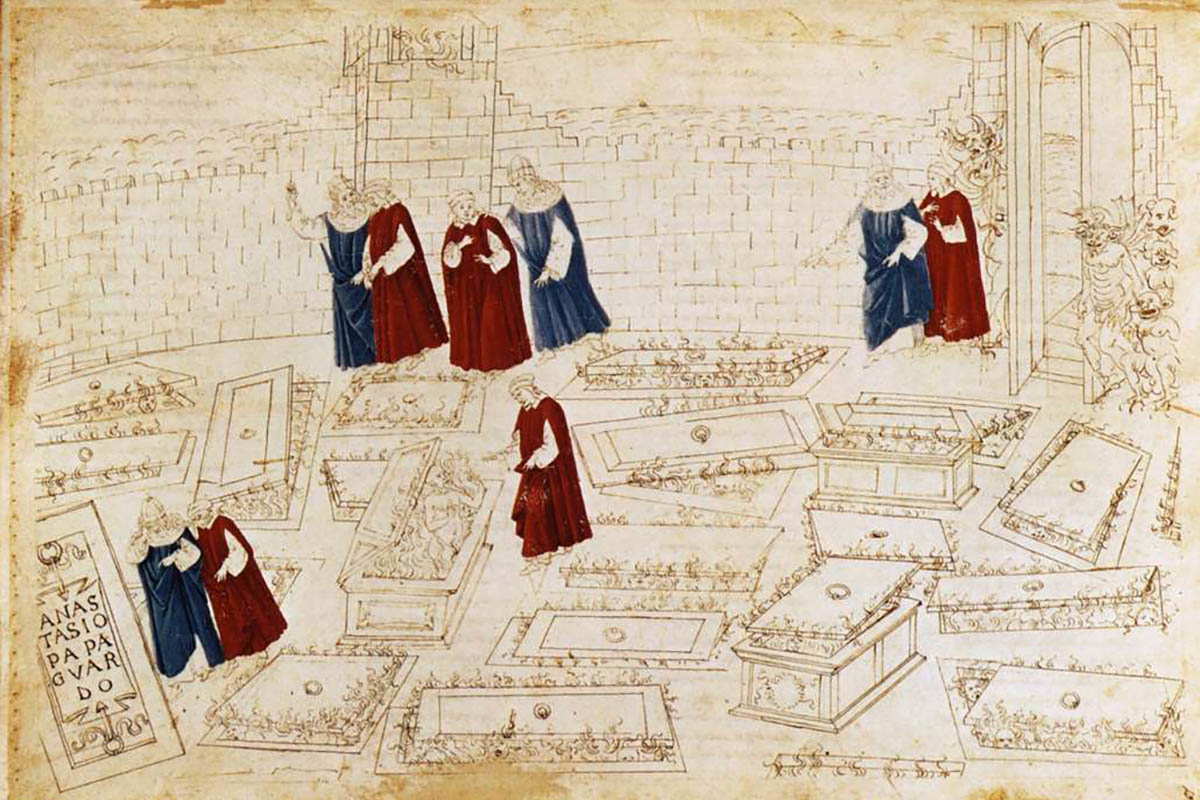
The sixth circle of Dante’s Inferno punishes the heretics. Dante, in red, and Virgil, in blue, are drawn throughout the canvas, to show the duo making their way through the circle. When Dante is shown alone, he is talking to a condemned soul. The two also stop by the tomb of “Anastasio Papa Guardo.” This refers to Pope Anastasius, who did not believe in the idea of the Holy Trinity — the idea that Christ is both “the father, the Son, and the Holy Spirit.” Because Pope Anastasius did not believe in the spiritual aspect of Jesus, he is punished alongside others who do not believe in souls.
There are several subsections of the heresy layer of hell, but these heretics in particular are being punished for following Epicurean philosophy. Dante explicitly states:
“Within this region is the cemetery
of Epicurus and his followers,
all those who say the soul dies with the body.”
(Inferno, 10.13-15)
Epicureans are motivated by life’s material pleasures. For Epicureans, life begins and ends with the body. Dante condemns these souls for having such myopic perspectives on their own being. Sinners here are constantly reminded of their ignorance as their non-physical bodies languish in tombs for eternity.
The Forest of the Suicides (Canto 13)

The seventh circle of hell punishes the violent. Figures who committed suicide were acting out violence against themselves. These souls lost to suicide were “thrown” into the underworld and left to sprout as trees wherever they land. Dante is echoing Christianity’s perspective on suicide. Christianity views suicide as a sin that squanders the gift of life given by God.
Botticelli’s depiction brings Dante’s description to life. Dante states that the trees are forlorn and gnarled (Inferno, 13.4-6), and the area is densely packed with trees. Dante writes:
“From every side I heard the sound of cries,
but I could not see any source for them,
so that, in my bewilderment, I stopped.”
(Inferno, 13.22-4)
Like Dante, who pauses to search through the dense woods, the viewer of the painting must also stop and search the painting for souls. Botticelli’s drawing evokes the same confusion that Dante describes. We are caught scanning the painting, trying to discern sinners from the trees. The detail conveys the confusion of hell’s inhabitants and its visitors.
The Bloody River of Phlegethon (Canto 15, Canto 16)
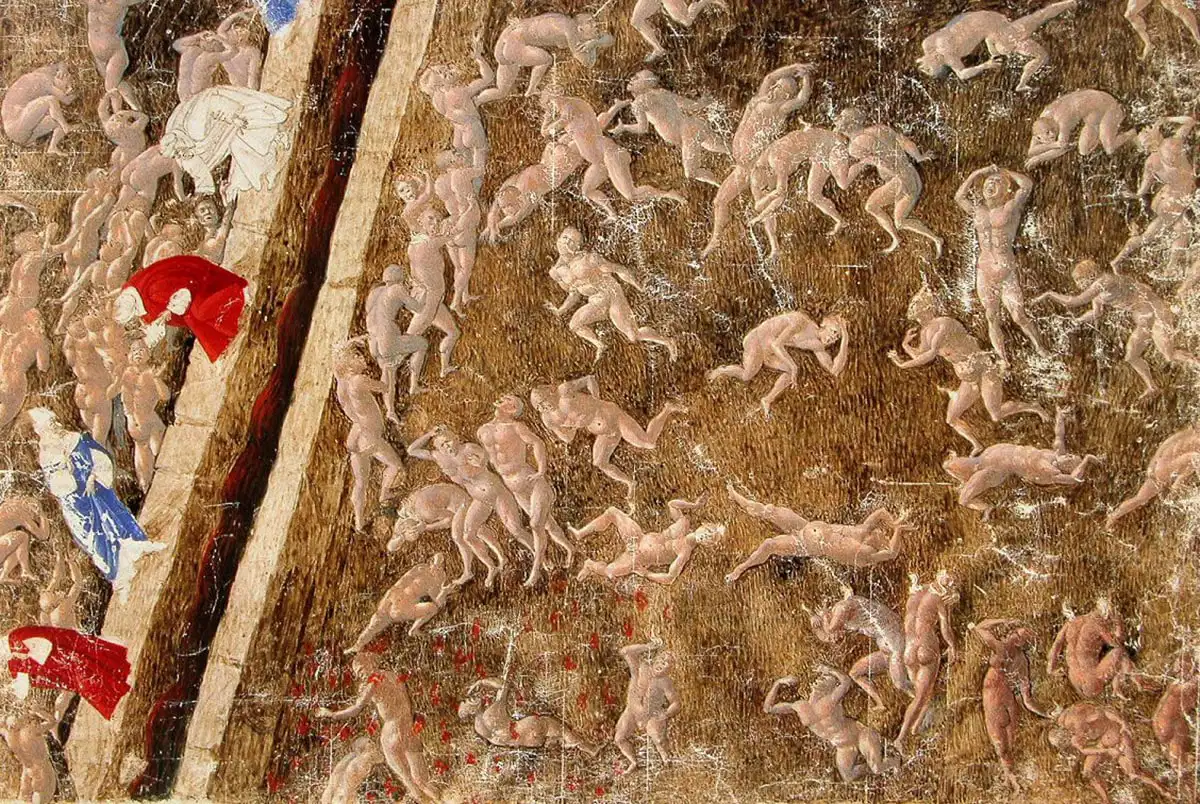
The Phlegethon, a river that shares its name with one found in Virgil’s Aeneid, is a boiling river of blood. Botticelli’s colorful painting shows Dante and Virgil moving along the edge. Dante meets Brunetto Latini, who was likely a formative role model for Dante in his early years. Latini is punished among the sodomites, which leads some to wonder if he was openly gay. However, Dante praises Latini, comparing him to a track runner, and closes out the canto by stating:
“… he appeared to be the winner, not the loser.”
(Inferno 15.123-4)
There already exist several scholarly interpretations on this exchange. While Dante openly admonishes excessive lust and indulgence in earlier cantos, this passage celebrates Latini. Here, I see Dante showing solidarity and kinship towards someone living life on their own terms.
The Great Beast Geryon (Canto 17)
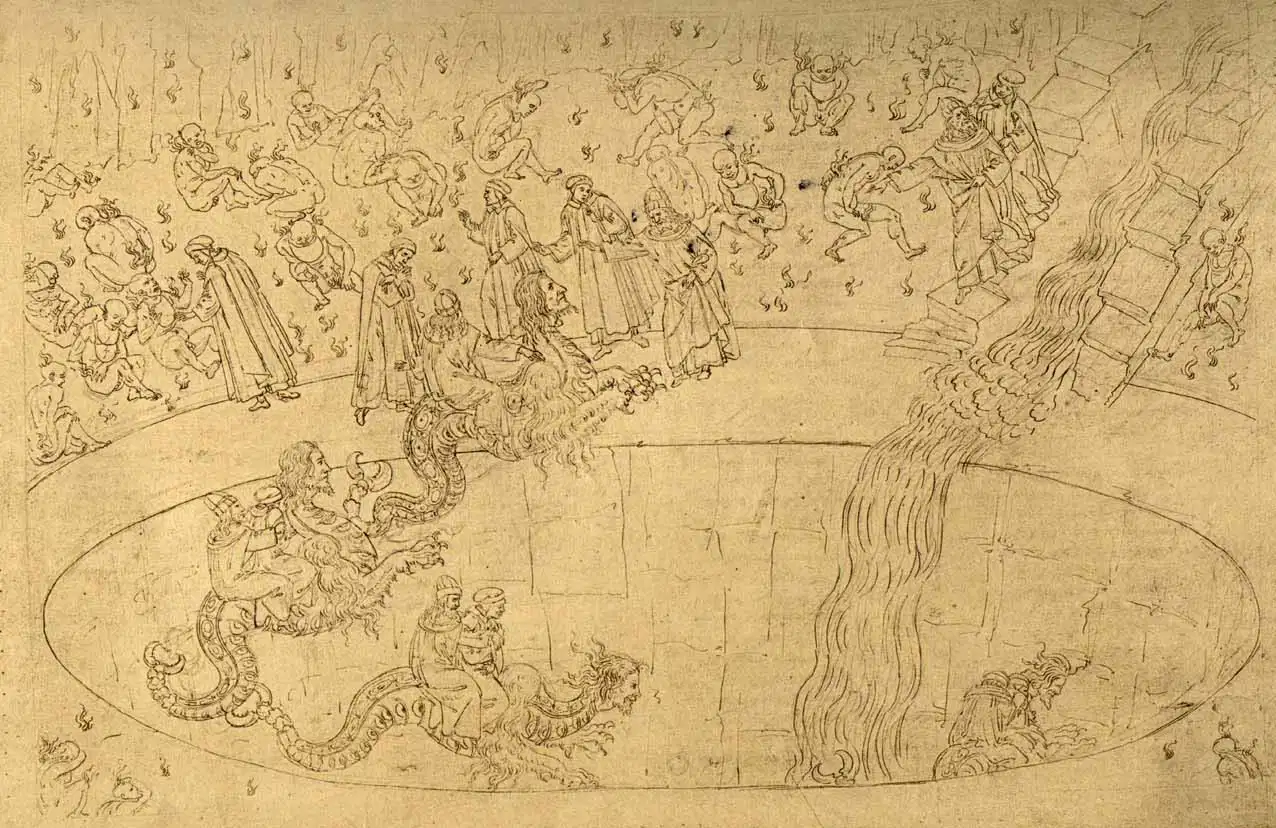
Geryon is another mythical creature borrowed from Virgil’s Aeneid. He is a patchwork of several different creatures: a man’s face, a serpent’s body, furry front legs, wings with colorful tapestry-like patterning, and a scorpion’s tail (Inferno, 17.1-27). As in earlier images, Botticelli shows progression throughout the scene. Geryon is drawn at several different points to create movement in the scene. Dante would include several other mythical beasts throughout Inferno, leading us to realize how massive and mysterious hell truly is.
Seducers and Adulterers (Canto 18)

This drawing, unlike others, is probably the most complete. It has been colored, and Dante and Virgil also have more detail on their clothes. Like previous images, Botticelli chooses to portray the duo moving through the landscape, interacting with different sinners along the way. This corresponds with different exchanges in the poem.
The layer is known as the Malebolge, which is made up of ten separate pits (Inferno, 18.24). The fraudsters are punished here, with each pit housing a different type of fraud. Here, Botticelli depicts the two pits in Canto 18. The seducers and pimps’ nude bodies are whipped by demons, and the pain is so unbearable they are constantly running (Inferno, 18.34-6). Flatterers are punished in the second ditch, covered in excrement (Inferno, 18.125-6). Because flatterers spew dishonest sentiments from their mouths, their souls are left to fester in the same feces they had spewed throughout their lives.
Dante’s Inferno as a Muse
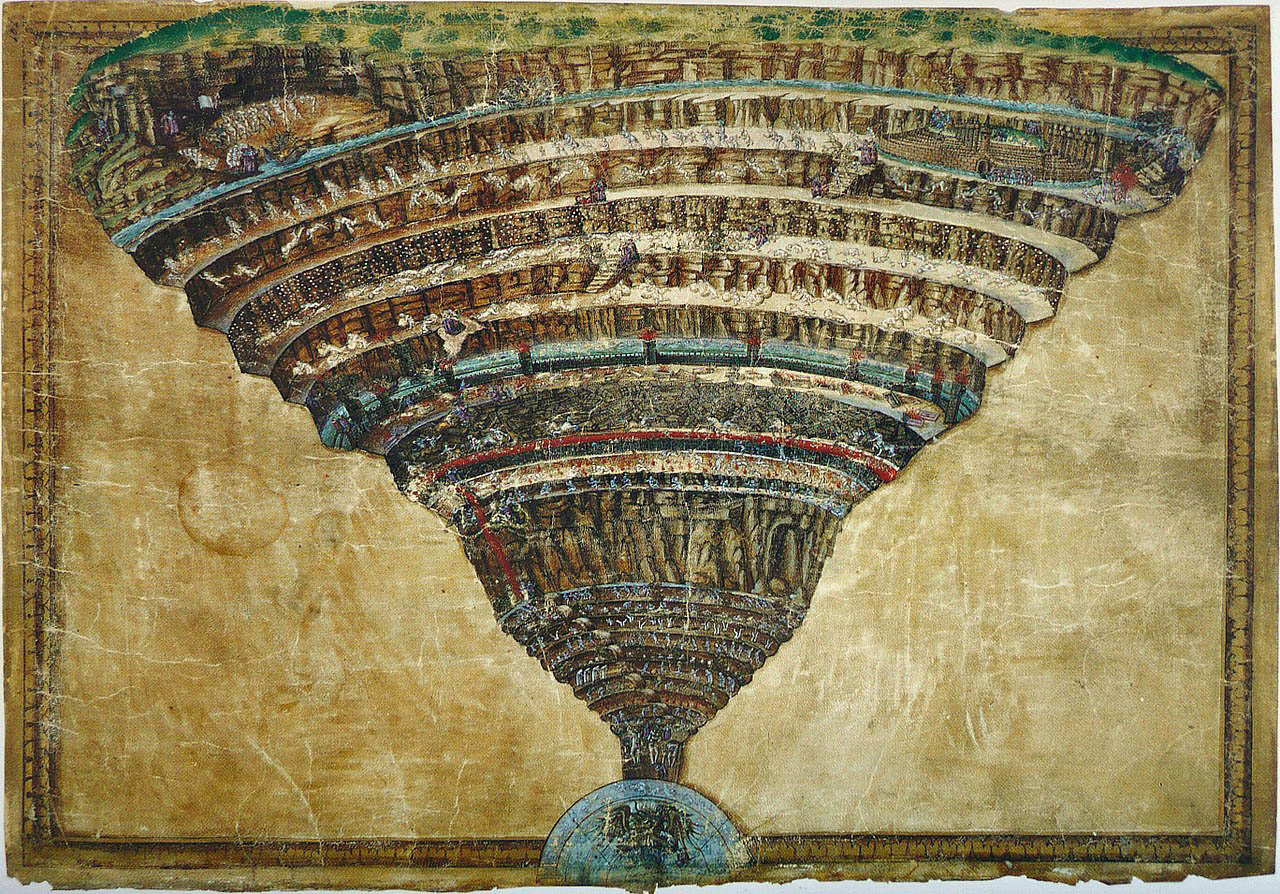
Botticelli drew other scenes from Purgatorio and Paradiso, the two subsequent installments of the Divine Comedy. While it seems he was initially commissioned for all 100 cantos of the work, the series remains unfinished. Examining Botticelli’s drawings of Dante’s Inferno presents a fun thought experiment as we imagine the Florentine man looking back to his medieval predecessor travelling through hell with Virgil as his guide. Botticelli’s society sought to stand on the shoulders of giants.
Botticelli’s drawings of Dante’s Inferno offer a departure from his most celebrated paintings. While the most recognized works embody eloquence and grace, his paintings of Inferno bring life to Dante’s vivid descriptions. It is a delight to see how Dante’s details served as a muse for Botticelli’s drawings. They help us to realize we never know how our works will live on to inspire the next generation.








